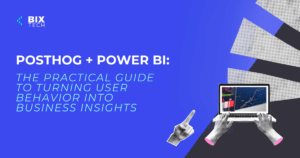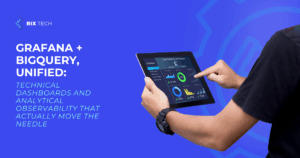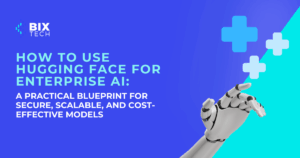Foundation Models and Fine-Tuning: Unlocking Domain-Specific AI Excellence

Sales Development Representative and excited about connecting people
In the fast-evolving world of artificial intelligence, the terms “foundation models” and “fine-tuning” are becoming buzzwords — and for good reason. Foundation models, such as GPT-4, BERT, or Stable Diffusion, are large, pre-trained neural networks capable of performing a wide variety of tasks. But the true magic happens when these models are fine-tuned for specific domains, unlocking unprecedented value and tailored intelligence for businesses and industries.
So, how do foundation models and fine-tuning work together? And how can your organization leverage this powerful combination for your unique needs? Let’s dive in.
What Are Foundation Models?
Foundation models, sometimes called large language models (LLMs) or generative models, are massive AI systems trained on vast amounts of general data. They’re built to understand and generate language, images, or even code, making them versatile tools. Think of them as the “generalists” of the AI world — incredibly knowledgeable, but not yet specialized.
Key Features:
- Scale: Trained on billions (sometimes trillions) of data points.
- Flexibility: Can handle a wide range of tasks, from summarization to image generation.
- Transferability: Serve as a starting point for domain-specific applications.
Some of the most recognizable foundation models include OpenAI’s GPT series, Google’s BERT, and Meta’s LLaMA. These models set the stage for the next step: fine-tuning.
The Power of Fine-Tuning: From Generalist to Specialist
While foundation models are powerful, they often lack the nuanced understanding required for specialized business cases. That’s where fine-tuning comes in.
Fine-tuning is the process of taking a pre-trained foundation model and further training it on a smaller, domain-specific dataset. This helps the AI learn the jargon, processes, and quirks unique to your industry or company. As a result, the model’s outputs become more accurate, relevant, and valuable.
Fine-Tuning in Action: Real-World Examples
- Healthcare: A foundation model can be fine-tuned on medical texts to accurately interpret clinical notes, suggest diagnoses, or automate documentation.
- Legal: Law firms can fine-tune models to understand legal language and case precedents, powering smarter contract analysis or legal research tools.
- Finance: Banks can train models on financial documents and regulations to automate compliance checks or risk analysis.
- Customer Support: Fine-tuned chatbots understand company-specific FAQs, tone, and escalation procedures, delivering a seamless customer experience.
For a deeper look into how businesses experiment with AI before full adoption, check out our guide to exploring AI PoCs in business.
Why Fine-Tuning Matters for Domain-Specific AI
Fine-tuning foundation models offers several practical advantages:
1. Improved Accuracy and Relevance
By exposing the model to sector-specific data, you reduce “hallucinations” (incorrect or irrelevant responses) and increase precision.
2. Faster Time to Value
Rather than building an AI solution from scratch, you leverage years of research and massive datasets, then quickly adapt the model to your needs.
3. Cost Efficiency
Fine-tuning requires far less data and compute power than training a new model from scratch — making advanced AI accessible even for smaller organizations.
4. Competitive Differentiation
A model tailored to your data, tone, and business logic is harder for competitors to replicate.
How Fine-Tuning Works: The Process
Let’s break down the typical steps:
1. Select the Right Foundation Model
Choose a model whose capabilities align with your goals. For instance, language-based tasks often start with models like GPT or BERT, while vision-based applications might use models like CLIP or Stable Diffusion.
2. Prepare Domain-Specific Data
Curate quality examples from your industry — such as emails, contracts, medical records, or historical support tickets. Data privacy and compliance are paramount here.
3. Fine-Tune with Supervised Learning
Retrain the model on your dataset, often using techniques like supervised learning or reinforcement learning with human feedback (RLHF).
4. Evaluate and Iterate
Test the fine-tuned model in real-world scenarios, gather feedback, and continuously improve.
To better understand how language models are revolutionizing business, explore our guide to language models and business applications.
Challenges and Considerations
While fine-tuning unlocks powerful benefits, it’s not without challenges:
- Data Quality: Poorly curated or biased data can lead to inaccurate or unfair outputs.
- Overfitting: Too much focus on a narrow dataset may reduce the model’s generalizability.
- Resource Requirements: While less than full training, fine-tuning still requires specialized expertise and infrastructure.
- Ethical and Regulatory Compliance: Especially in regulated industries, ensuring the model’s outputs adhere to standards is critical.
Best Practices for Successful Fine-Tuning
- Start Small:
Run pilot projects or proofs of concept before scaling up.
- Prioritize Data Governance:
Ensure your datasets are clean, compliant, and representative.
- Collaborate with Domain Experts:
Their input is invaluable for curating data and evaluating results.
- Monitor and Measure:
Continuously track model performance and user feedback.
- Plan for Ongoing Updates:
Domains evolve — your AI models should too.
The Future of Domain-Specific AI
With foundation models and fine-tuning, businesses are no longer limited to one-size-fits-all AI. Instead, they can build solutions as unique as their challenges. From automating complex tasks to generating strategic insights, the potential is limitless.
In fact, industry leaders are already seeing tangible results. Companies recognized for innovation and excellence — such as those highlighted in the Clutch 2024 Global Awards — are leveraging domain-specific AI to drive growth, efficiency, and customer satisfaction.
Final Thoughts
Foundation models offer a powerful starting point, but fine-tuning is the key to unlocking domain-specific AI that truly adds value. By combining the breadth of large models with the depth of specialized data, organizations can create solutions that are precise, reliable, and transformative.
As this technology continues to mature, now is the perfect time to explore how domain-specific AI can give your business a competitive edge.
Ready to take the next step? Discover more about AI’s business impact and practical steps to get started by visiting our language models in business guide or AI PoCs in business.
Let’s build the future — one finely-tuned model at a time.










